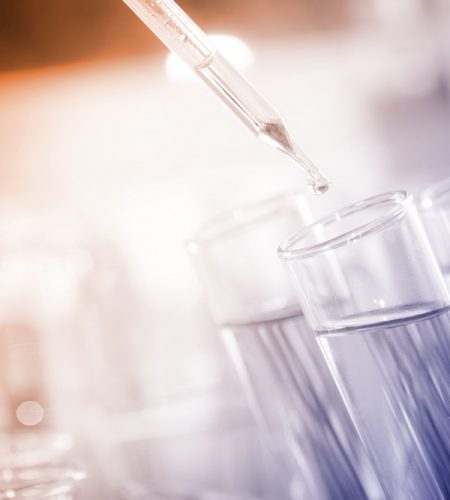Leading Water Testing Service: Guarantee Your Family's Safety Today
Wiki Article
Understand the Value of Water Screening in Preserving Conformity With Wellness Requirements
In the world of public health, recognizing the value of water screening is crucial for preserving compliance with rigid wellness criteria established forth by reliable bodies like the WHO and EPA. What are the precise methods utilized in water testing, and just how do they guarantee that our most crucial source continues to be uncontaminated?Key Health Specifications for Water
Making sure the safety and high quality of alcohol consumption water is vital, as it straight impacts public wellness. Rigid health and wellness standards are developed to safeguard individuals from waterborne diseases and pollutants that can lead to adverse health and wellness results. The World Health Company (WHO) and nationwide firms like the Environmental Security Agency (EPA) in the United States established standards and regulatory limitations for numerous physical, chemical, and organic specifications in alcohol consumption water.These criteria are based on considerable scientific study and are regularly examined to include technological improvements and new findings. Secret criteria include microbial impurities such as bacteria and infections, chemical contaminants like lead and arsenic, and physical attributes such as turbidity and pH levels. Compliance with these requirements makes certain that water is without unsafe compounds and is cosmetically pleasing to the consumer.
Water screening plays an important role in validating compliance with these health criteria. Regular monitoring and screening assistance identify prospective issues before they posture a considerable health risk, enabling for timely intervention and remediation. By complying with these standards, water service providers can maintain public self-confidence in the safety and security of the neighborhood's supply of water, thereby guarding public health and wellness efficiently.
Common Contaminants Identified
When evaluating water quality, what are the most widespread contaminants that often tend to be discovered? Microbial pathogens, consisting of germs like Escherichia protozoans and coli such as Giardia and Cryptosporidium, are often found in water sources, posturing substantial health and wellness risks if ingested.Chemical contaminants are additionally a key issue. Nitrates, frequently resulting from agricultural plant foods, can result in serious health and wellness problems, particularly in infants. Heavy metals such as lead, arsenic, and mercury, typically introduced via industrial discharge or all-natural mineral deposits, can have lasting poisonous effects. Volatile organic compounds (VOCs) and pesticides, by-products of commercial tasks and farming practices, further contribute to water contamination.
Not natural substances such as fluoride and chlorine, although occasionally purposefully contributed to water for health benefits, can become problematic at elevated levels. Arising pollutants, consisting of pharmaceuticals and individual treatment products, are increasingly being detected, raising issues concerning their prospective impact on human health and ecological communities. Addressing these impurities is necessary for protecting public health and making sure water quality conformity.
Methods of Water Testing
Water screening's precision is important for making certain and determining impurities safety conformity. Water Testing Service. To attain accurate outcomes, numerous techniques are used, each tailored to find specific pollutants and align with governing requirements. One widespread technique is spectrophotometry, which determines the absorption of light by chemical materials in the water, thus determining components like nitrates and phosphates. This technique is useful for its sensitivity and specificity.Chromatography is one more innovative method utilized, specifically for organic pollutants. By dividing mixtures into private parts, it permits detailed evaluation of complicated toxins. Gas chromatography and liquid chromatography are frequently utilized variations, each matched for different substance types.
Microbiological internet testing is crucial for finding pathogens such as germs, infections, and protozoa. Techniques such as membrane purification and multiple-tube fermentation are utilized to culture and identify microbial presence. These methods are critical in safeguarding public wellness by ensuring microbial safety and security.

Advantages of Routine Testing
Comprehending the various methods of water screening highlights the requirement of routine testing techniques to preserve water high quality. Routine water testing acts as a proactive measure to recognize potential impurities prior to they escalate into significant health and wellness dangers. By constantly checking water top quality, organizations can detect toxins such as microorganisms, hefty metals, and chemical deposits early, permitting timely treatments that protect against carcinogen and expensive remediation initiatives.
In addition, routine testing ensures that water supply adhere to well established wellness requirements and regulations. This conformity is vital for preventing legal fines and keeping the depend on of stakeholders and consumers. Constant water quality evaluations help determine trends or fluctuations in water make-up, giving useful information that can lead operational decisions and source monitoring strategies.
Moreover, regular water testing fosters public confidence by demonstrating a commitment to security and transparency. In industries such as local water medical care, supply, and food processing, preserving high water high quality standards is essential to safeguarding public health and wellness. Regular testing also sustains ecological sustainability by making sure that water sources are handled responsibly. Overall, the advantages of normal water screening prolong beyond conformity, boosting functional effectiveness, public safety, and ecological stewardship.
Steps to Guarantee Compliance
To ensure conformity with water top quality guidelines, companies need to execute an organized technique encompassing both preventative and restorative measures. At first, a comprehensive danger evaluation should be carried out to identify prospective contamination sources and vulnerabilities within the water supply. This evaluation notifies the growth of a tailored water administration strategy that lays out particular checking methods, frequency, and specifications needed to fulfill regulatory requirements.
Subsequent to the preparation stage, companies should establish a schedule for routine water screening that adheres to both national and regional guidelines. Utilizing certified research laboratories ensures the accuracy and reliability of test results. Any type of inconsistencies from appropriate water top quality criteria have to motivate instant corrective actions, such as system cleaning, repair work, or changes in treatment processes.
In addition, keeping comprehensive records of all screening tasks, outcomes, and rehabilitative activities is crucial for showing conformity throughout audits and inspections. Regular training and updates for staff associated with water monitoring procedures are crucial to ensure they understand current regulations and best techniques.
Verdict
Routine water testing is important for maintaining compliance with wellness criteria established by organizations such as WHO and EPA. By identifying impurities try this site like microbial microorganisms, heavy steels, and chemicals, screening ensures that alcohol consumption water stays safe. Positive tracking safeguards public health and wellness, sustains regulatory conformity, and fosters confidence in water top quality administration. In addition, constant screening promotes ecological sustainability and safeguards communities, protecting vital water sources for future generations. Conformity with these standards is critical for the well-being of culture.In the realm of public health and wellness, understanding the significance of water screening is important for keeping compliance with rigid wellness requirements established forth by reliable bodies like the WHO and EPA. By adhering to these requirements, water service providers can preserve public self-confidence in the safety and security of the community's water supply, consequently safeguarding public health successfully.

In markets such as local water healthcare, supply, and food handling, preserving high water high quality standards is integral to protecting public wellness.
Report this wiki page